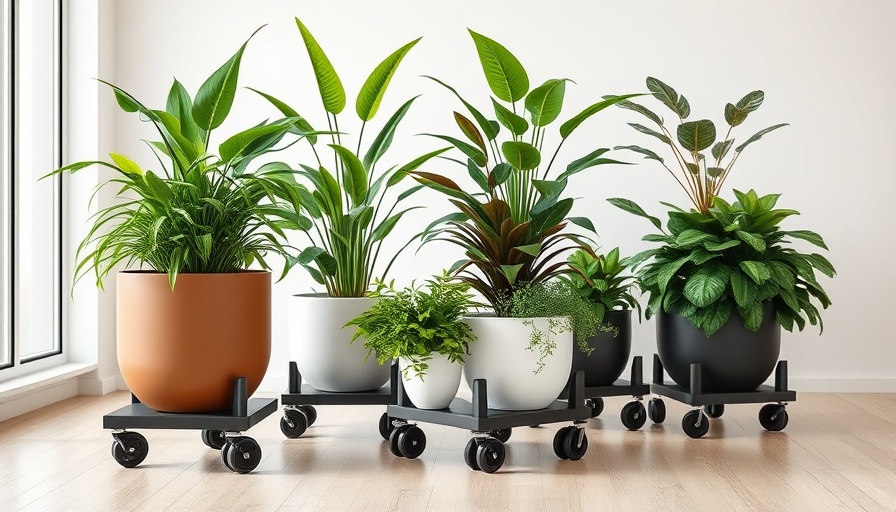
The Rise of Biophilic Office Design: Merging Work and Nature
In today’s workplace, creating a harmonious environment is more crucial than ever. Biophilic design, which integrates natural elements into office spaces, is emerging as a key trend that enhances employee well-being and productivity. According to studies, workplaces that embrace biophilic principles report not only improved air quality and reduced stress levels but also heightened creativity and collaboration among employees.
Introducing Plantable: A Game-Changer in Office Furniture
One innovative solution gaining traction in the realm of biophilic design is Plantable, a product line by SurfaceWorks. Designed in collaboration with bangdesign, this collection incorporates tables and planters that invite greenery into the workplace effortlessly. The design objectives emphasize usability and versatility. Bryan Marshall, co-founder of bangdesign, highlights the correlation between nature and productivity, stating, "Plantable was born from a focus on users, aiming to connect the benefits of plants to where people work together." With various height options—seated, counter, and standing—and customizable colors and materials, Plantable not only meets functional needs but also celebrates natural elements, helping to create an inviting working atmosphere.
The Benefits of Bringing Nature into Workspaces
The incorporation of plants in the workplace offers numerous advantages. For instance:
- Improved Air Quality: Indoor plants naturally filter air toxins, leading to cleaner and healthier environments.
- Reduced Stress Levels: Being surrounded by nature can lower stress and promote mental clarity.
- Enhanced Productivity: Research shows that natural elements help increase focus and creativity.
These outcomes underscore the growing acknowledgment of the importance of biophilic office design as not just a decorative choice but a strategic necessity.
Practical Implementation: How to Adopt Biophilic Design Principles
Adopting biophilic design doesn't have to be daunting. Here are some practical ways to get started:
- Start Small: Introducing a few potted plants can significantly improve your space. Gradually add more natural elements.
- Focus on Natural Light: Maximize window space and consider using skylights to ensure ample natural lighting, which is essential for regulating mood and productivity.
- Choose Natural Materials: Opt for furniture made from natural materials like wood, which not only looks appealing but also resonates with a serene atmosphere.
Future Trends in Office Design
As more businesses recognize the benefits of biophilic design, the future of office spaces is likely to involve even more innovative integrations. The potential for smart natural materials, improved adaptive surfaces that respond to environmental changes, and the blending of technology with nature presents exciting opportunities for enhancing workplace environments.
Conclusion: Embracing Nature in the Workplace
Ultimately, Plantable represents the perfect blend of functionality and natural beauty, showcasing how office environments can become more inviting and productive. As companies strive to create spaces that enhance employee well-being, biophilic design is undoubtedly paving the way. For contractors and business owners alike, understanding and integrating these principles can lead to a significant competitive advantage in attracting and retaining top talent.
 Add Row
Add Row  Add
Add 




Write A Comment